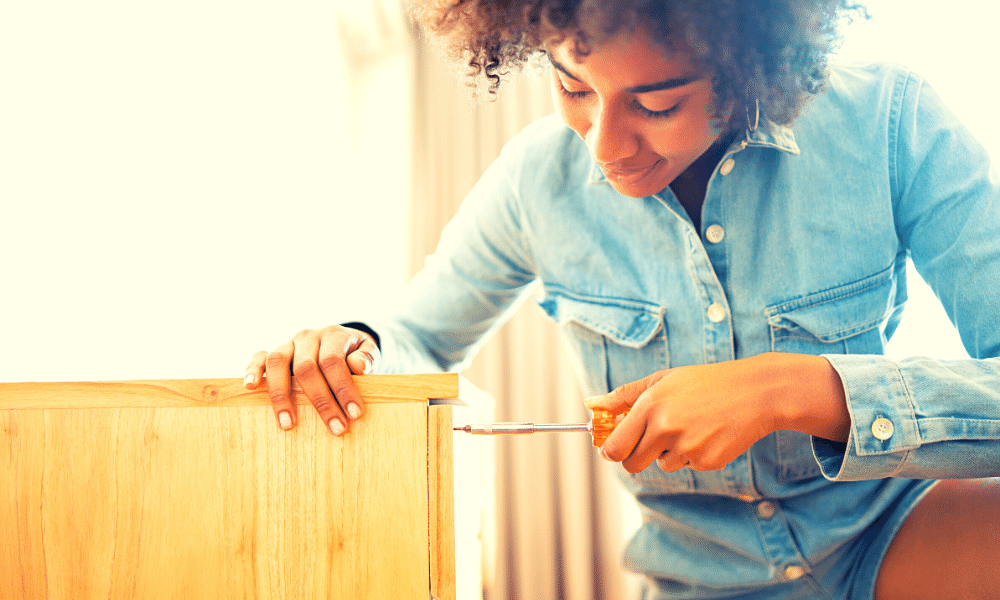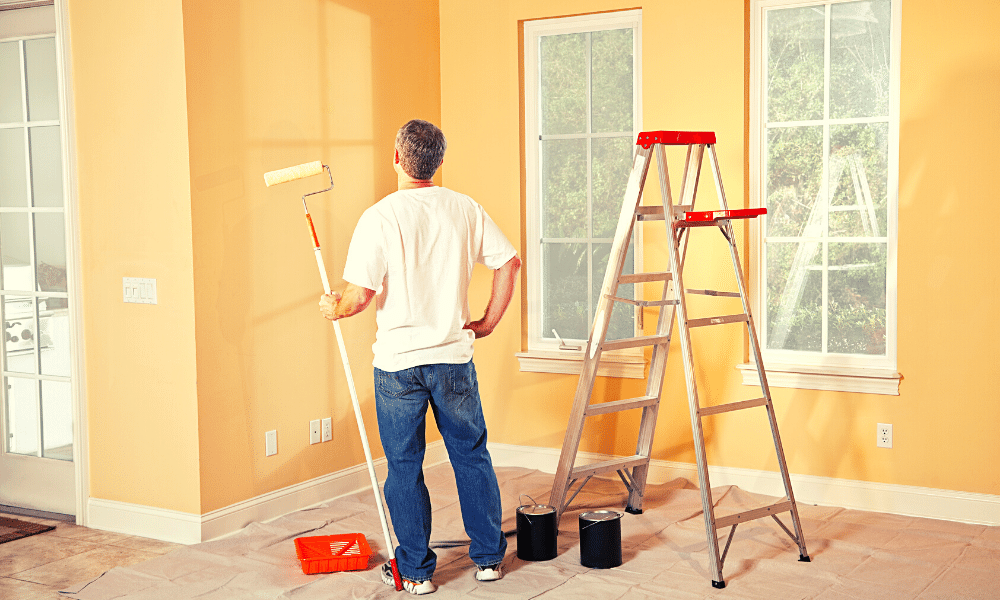It is the goal of every seller to have their house sell quickly and make a profit. But it takes more than luck. This requires careful planning and the ability to prepare your house professionally to get buyers to open their wallets.
These are some steps that you can take to ensure your house sells quickly, and how you can save money when selling your home.
Tip #1: Step up your yard game
When they are looking to spend their entire life savings on a property, buyers tend to be more critical of the exterior appearance of the property.
Experts say that curb appeal is the most important aspect of your home’s exterior. This can increase your home’s value by 20%.
Enhancing curb appeal does not have to be expensive.
To-Do List:
- Clean the exterior of your home (including the windows) and remove any dirt or weather wear.
- Take care of any yard debris, including branches, leaves, or dead plants.
- spray down your paths and driveway
- Trim excess growth from trees and plants
- Weed and mow your lawn. If you live in a desert climate, rake the rocks.
To properly maintain your greenery, you will need a pair of top-quality pruning shears. However, be careful not to do irreversible damage that could eventually kill your trees and shrubs. If you are reckless, your buyer’s inspector will notice. This can lead to a big price decrease.
Save money: Get free mulch
Mulch is great for making bare dirt flower beds beautiful. It also protects and enhances the soil. A bag of mulch costs $3-$5 per bag, but one bag won’t last very long.
If you’re able to find the right place to search, you might be able to receive mulch free.
Some landscaping companies have a lot of yard trimmings they need to get rid of. Others use local yard trimming recyclers to make mulch they can give to gardeners who are in dire need. Others mulch their own yard waste and give it away to anyone who asks.
Tip #2: Declutter, declutter, declutter!
The moment you decide to sell your house, it is no longer your home. Kamoei advises that you should declutter and depersonalize your home to make it more appealing to potential buyers.
Although both depersonalizing and cluttering serve the same purpose, there are key differences.
Decluttering simply reduces the clutter around your home so potential buyers can focus on your house and not your possessions.
Depersonalizing goes beyond decluttering and eliminates personal items that emphasized you, not your house. But that’s not all.
Before you show your home, scan it for personal items such as your toiletries in your bathroom or bills sitting on your desk.
Before you begin decluttering and depersonalizing your home, grab some boxes and start going through the whole house. Pack every heirloom, knickknack, and personal favorite you can’t live without in the next house.
You can protect your treasured possessions by storing them securely.
To-Do List:
- Clear out your closets and pack at least 50%
- Remove all clutter from the countertops of your kitchen and bathroom
- Packing and organizing kitchen and bath cabinets (packing & purging 50%).
- Declutter your living and dining rooms
- All bedrooms should be decluttered
- The whole house can be depersonalized
Save money: Sell your stuff
This small money-saver could be a moneymaker that could help you save enough money to buy all the other things you need to make your house ready for sale.
Don’t just donate all the things that aren’t moving with you; sell them.
There are many places where you can sell your junk for dollars. Some items sell better or for more money depending upon the place that you sell them.
You can sell vintage toys and old electronics on eBay. If you have bulky items like furniture or riding toys, it is possible to still make a profit by selling them on local sites like OfferUp.
Don’t forget about the old-fashioned garage sale. If you use smart, money-making marketing strategies, you can make a lot of cash selling just about anything in your yard.

Tip #3: Make minor repairs
You probably have a list of home repairs you want to do, just like every homeowner. Maybe you breathed a sigh of relief when you decided to sell your house.
But not so quickly.
You don’t need to make expensive, extravagant renovations like the kitchen remodel. Or cosmetic projects like installing a gazebo in your backyard. There are some repairs that you need to make before you sell.
Your buyer’s inspector will flag any minor repairs that are left unfinished. These obvious problems are a sign that the home has not been maintained properly. The inspector will look for other less obvious issues.
Soon, you will have a long list of repairs your buyers need. Or they may want to lower the price because they aren’t finished.
If you have any of the following problems, it is important to fix them immediately.
To-Do List:
- Electrical problems
Faulty outlets, light fixtures, or switches; frayed wire; damaged junction boxes; loose, missing, or defective wire nuts - Grading and Draining
Poor grading, rain, and melting snow pooling around the foundation are all signs of clogged gutters. - Roof problems
Leakage (and any water damage within the home); missing or damaged Shingles; wood rot; damaged Fascia boards; missing or damaged Flashing, drip edge, or other finishings - Poor upkeep
Dirty HVAC filters; cracked, dirty, or damaged caulk around doors and windows; peeling paint; cracked pavement - Plumbing issues
Leaky pipes, calcium buildup in plumbing fixtures, dripping faucets, and mold damage
The good news? You can do a lot of these small projects online thanks to the wealth of great content on home repair.
You can do even the most difficult jobs if you do your research. Remove hard, white calcium buildup from faucets or Replace caulking around your windows and doors.
Some jobs, such as plumbing or electrical, will require professional assistance to make sure they are done correctly and according to code. Otherwise, you’ll be forced to spend more money to fix them later.
Save money: Hire a Handyman
If you have too many complicated DIY projects, it is worth hiring several experts (plumbers, roofers, electricians, etc.). It can be very expensive to tackle all of them.
There’s an affordable way to do the job without spending too much: hire a handyman.
Handymen are often jack-of-all-trades. This means they can do minor electrical and plumbing work, such as replacing light fixtures and faucets. They can also do small jobs in one day, so you only have to pay the mandatory service fee or minimum charge for each project.
Tip #4: Stage your house to help buyers visualize it as their own
Your house is warm, inviting, and full of personality. It took a lot of effort. Now it’s time for you to let go of all that charm and give buyers a blank canvas to create their perfect home.
Staging your home with neutral, appealing decor.
“One house that I sold was pink with original everything, and the owners didn’t have enough money to fix it up,” Kamoei recalls that the house had been on the market for eighteen months.
“We decided to spend our limited budget on staging instead of painting the property. Their furniture was also dated. We were happy that we hired a professional stager and someone purchased the property the next day. This is the power of staging”.
Our data shows that more than 51% of surveyed agents believed staging power resulted in a quicker sale for 1% to 10% less money than an unstaged competitor.
To-do list:
- Get rid of bulky furniture
- Rearrange remaining furniture for better flow
- Slipcovers are an inexpensive way to refresh worn furniture
- To demonstrate the functionality in awkward spaces, create vignettes
- Use rugs, throw pillows, and bright vases to add color to your home.
- Fancy towels will warm up dull bathrooms
- A collection of succulents can bring life to a dull kitchen.
- Soft stage empty spaces with art on the walls
Save money: Go bargain hunting
Visit the thrift store. It’s a great way for people to see your staging and add color to their homes.
These items don’t need to be kept after the sale of your home. So go ahead, and buy generic (and inexpensive!) items. You can find towels, artwork, decorative bowls, vases, throw pillows, and rugs at discount stores or even dollar shops.
Ask your realtor for assistance if you are unable to channel your inner decorator and stage the house yourself. You’ll get great ideas and help to sell your home. Some agents even offer free staging services.

Tip #5: Apply a new coat of paint
Top agents recommend fresh painting after cleaning. This is a good idea. New paint can make a home feel new, almost like a new car smell. This is especially true if it’s a cohesive color that you use throughout the house.
However, professional painting can be costly.
An average cost to paint an interior 2,300-square-foot house is $6,900. This includes two coats of paint on walls and a second color for ceilings and baseboards. Painting the exterior of a 1,500-square-foot house will cost you an additional $2,500 to $3,000.
You don’t need an additional $10,000 to do this job. You don’t have to hire a professional to paint your entire house inside and out. This big, but the manageable task can be done by you.
This is especially possible if you are familiar with the tricks and tips that professional painters use. For example, use blue painter’s tape to cover everything. Also, get a painter’s rod to reach the overhead areas and use the right roll techniques for complete coverage.
The key to achieving that professional painter look is not before you crack open the first can of paint. It all comes down to how well you prepare and do the patching.
To-Do List:
- Move furniture from walls to remove clutter and broken items
- Clean walls and baseboards thoroughly (or else you will see grime spots or dust motes in the fresh paint).
- Patch Repair drywall damaged by nail holes, cracks, or dents
- You can retexture larger patches that scream “there used to be a hole there”
- Protect your floors and furniture with Tarps and Temporary Flooring Protectors
- Tape windows, doorframes, ceilings, and outlet faceplates where paint is not required
- Use time-saving paint techniques to paint everything
- Take off tape, tarps, and protectors. Use a putty knife or a razor to score the paint at the edges. This will ensure that the paint doesn’t get pulled up when you pull away the tape.
- All furniture and decor should be replaced
It’s not necessary to paint the entire place, especially if the previous three to five years have been spent painting it in neutral colors.
You can touch up paint in certain cases. But make sure that the colors match. You’ll make it look worse than before. Kamoei says that she has seen many paint jobs go wrong.
Paint your exterior the same way.
This job is best left to professionals if your exterior needs extensive repainting. If you only need to do a few minor repairs on your exterior, it’s best to hire professionals. Simply sand, and paint problem areas. But make sure to color-test your new paint in an area that is not visible so it blends well with the existing color.
Save money: Use a primer to buy less paint
The most costly mistake interior painters make when covering dark walls with bright, light-neutral paint is to try and cover them.
Original hues, such as midnight blue and crimson, are so vivid and intense that they will show through your neutral paint. It will look more like you have painted them a pale or pink color, rather than a neutral one.
It’s even more difficult when there’s only one accent wall you want to cover, and you have to match it with the rest of your room.
To achieve deep or vibrant wall colors, it can take up to five, six, or more coats. This is why it’s so expensive if you pay $15-$40 per gallon.
Painters who are professionals avoid spending extra on additional coats of paint by using a primer first. Primers are specially made to remove existing colors and create a blank canvas for you to paint on.
They do more than that. Primers can also be used to prevent walls from absorbing odors like a pet or smoke odors.





